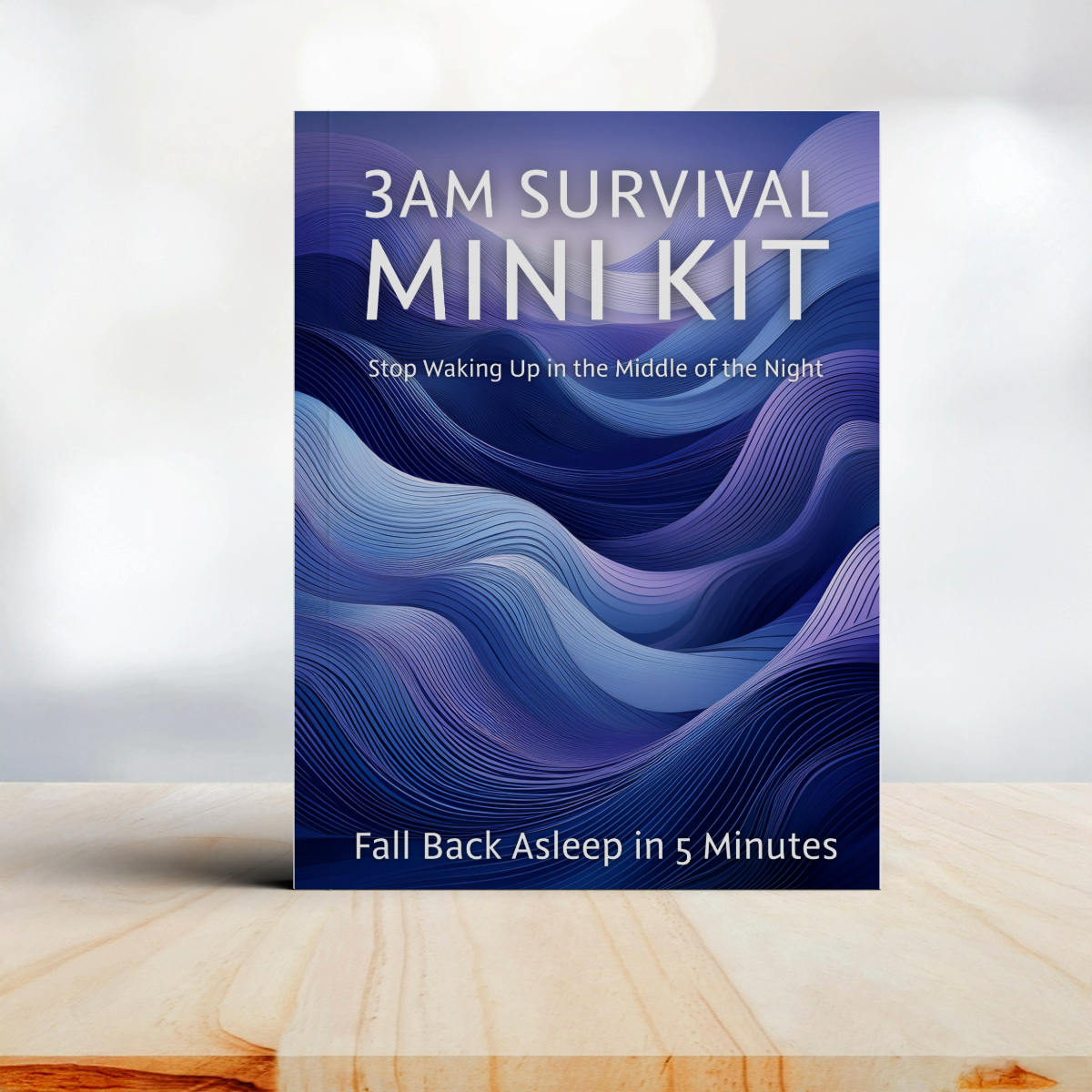Understanding Sleepwalking and Night Terrors: What You Need to Know
Published on July 9, 2025

What are Parasomnias?
Parasomnias are a diverse category of sleep disorders characterized by abnormal movements, behaviors, emotions, perceptions, and dreams that occur while falling asleep, during sleep, between sleep stages, or upon arousal. Unlike simple difficulty falling asleep or staying asleep, parasomnias disrupt the very quality and safety of sleep, often leaving both the individual and their loved ones distressed or confused.
What makes parasomnias particularly challenging is their unpredictable nature: one night may pass quietly, while another is marked by sudden episodes of walking, screaming, or acting out dreams. For many, these events are entirely forgotten by morning, creating a sense of mystery and concern.
Common Types of Parasomnias
Parasomnias can manifest in several ways, depending on the stage of sleep in which they arise. Some of the most common include:
- Sleepwalking (Somnambulism): Involves walking or performing complex behaviors such as eating, dressing, or even driving while still asleep. Episodes usually happen in the first third of the night during non-REM sleep.
- Night Terrors: Characterized by sudden screaming, thrashing, or intense fear while still asleep. Unlike nightmares, the sleeper is often inconsolable and has no memory of the event afterward.
- REM Sleep Behavior Disorder (RBD): The brain’s normal muscle paralysis during REM sleep is absent, allowing a person to physically act out their vivid, often frightening dreams. This condition is particularly concerning as it can result in injury.
- Sleep Talking (Somniloquy): Episodes of speaking or shouting during sleep. Though usually harmless, they may indicate other underlying parasomnias.
- Confusional Arousals: Episodes of incomplete awakening, where the sleeper appears awake but remains confused, disoriented, and unable to respond appropriately.
Night Terrors vs. Nightmares

3AM Survival Mini Kit
Fall Back Asleep in 5 Minutes
A clear, no-nonsense guide that tells you exactly why you wake up at 3AM and what to do the moment it happens — so you can stop the adrenaline spike, calm your body, and fall back asleep within minutes. Every step is practical and designed to fix the problem right when it starts.
See What’s Inside – $4Differentiating between night terrors and nightmares is essential for accurate understanding and proper care.
-
Night Terrors:
- Occur in the first third of the night, usually during deep non-REM sleep.
- Involve sudden screaming, flailing, or sitting upright with a look of fear.
- The person is hard to awaken and typically does not remember the event.
- Episodes are more common in children and can be triggered by fever, stress, or fatigue.
-
Nightmares:
- Happen during REM sleep, typically later in the night.
- Dreams are vivid, often frightening, and clearly remembered upon waking.
- The individual may wake up distressed but is fully conscious and oriented.
| Feature | Night Terrors | Nightmares |
|---|---|---|
| Sleep Stage | Non-REM (deep sleep) | REM sleep |
| Memory of Event | Usually none | Vivid recall |
| Typical Behavior | Screaming, thrashing, confusion | Waking with fear or anxiety |
| Common in | Children aged 3–12 | All ages |
| Duration | Seconds to minutes | Until waking |
Who is at Risk?
While parasomnias can occur in anyone, certain groups are more vulnerable:
- Children: Developing nervous systems make children between ages 3–12 particularly susceptible. Most outgrow parasomnias by adolescence.
- Genetics: A family history of sleepwalking or night terrors increases the likelihood of occurrence.
- Stress and Anxiety: Emotional strain heightens the chance of parasomnia episodes in both children and adults.
- Sleep Deprivation: Lack of restorative sleep destabilizes the sleep cycle, making abnormal arousals more likely.
- Irregular Sleep Schedules: Shift workers or frequent travelers crossing time zones are more at risk due to circadian rhythm disruptions.
Ensuring Safety at Home
For families dealing with parasomnias, safety is a priority:
- Remove Dangerous Objects: Eliminate sharp items, clutter, or furniture that could cause injury during episodes.
- Secure Windows and Doors: Locking entry points prevents wandering outside. Window guards or alarms may be useful.
- Use Safety Gates: Particularly important for children, especially near stairs.
- Create a Calm Sleep Environment: Dark, quiet, and cool rooms support stable sleep and reduce arousal triggers.
- Consider Technology: Motion sensors or wearable sleep trackers can alert caregivers when unusual nighttime movements occur.
Medical or Psychological Causes
Parasomnias may arise independently or as symptoms of other underlying conditions:
- Neurological Disorders: Parkinson’s disease, epilepsy, or dementia can increase the risk of REM-related parasomnias.
- Mental Health Disorders: PTSD, depression, and generalized anxiety disorder may trigger or worsen night terrors and nightmares.
- Substance Use: Alcohol, recreational drugs, and even common medications (such as antidepressants or sleep aids) can alter brain chemistry and provoke episodes.
- Sleep Disorders: Conditions like sleep apnea or restless legs syndrome can fragment sleep and increase the likelihood of parasomnias.
Practical Coping Strategies
While medical evaluation is important, lifestyle adjustments can significantly reduce the frequency and intensity of episodes:
- Maintain Sleep Hygiene: Go to bed and wake up at consistent times. Use tools like our Sleep Cycle Calculator to optimize your schedule.
- Reduce Stress Before Bed: Gentle yoga, journaling, or using calming practices from Sleep Tips & Gentle Strategies can lower arousal triggers.
- Avoid Triggers: Limit caffeine, alcohol, and heavy meals before bedtime.
- Prepare a Wind-Down Routine: Reading, soft music, or warm baths signal to the body that it’s time for rest.
- Physical Activity: Regular daytime exercise can improve sleep stability, but avoid intense workouts right before bed.
When to Consult a Sleep Clinic
Professional help is necessary if parasomnias become:
- Frequent: Occurring multiple times per week.
- Dangerous: Leading to falls, injuries, or harm to others.
- Disruptive: Causing severe sleep deprivation, anxiety, or impaired daytime functioning.
Sleep specialists may recommend:
- Polysomnography (Sleep Study): To monitor brain waves, breathing, and muscle activity during sleep.
- Cognitive Behavioral Therapy (CBT): Especially effective for stress-related parasomnias.
- Targeted Medication: For severe REM sleep behavior disorders or in cases where lifestyle changes are insufficient.
Final Thoughts
Parasomnias can be unsettling, but they are not without solutions. Most children outgrow them, and adults can often reduce episodes by addressing stress, improving sleep hygiene, and creating a safe environment. For persistent or dangerous cases, professional evaluation is key.
The journey to better sleep begins with awareness. If you suspect parasomnias are affecting your life, consider starting with our Sleep Test to gain insights and take the first step toward reclaiming calm, restorative nights.
Frequently Asked Questions
Martin Lain — Sleep Researcher & Creator of SleepCureAI
Martin Lain combines modern sleep science, circadian-rhythm research, TCM-inspired insights, and AI-based pattern analysis to help people understand their sleep more deeply. His work integrates gentle nighttime rituals, nervous system regulation, and data-driven tools.
Medically Reviewed by
Dr. Mei Lin, DACM – TCM Sleep Medicine Specialist
(Editorial Medical Reviewer Persona)
Dr. Mei Lin is an editorial medical reviewer specializing in Traditional Chinese Medicine. Her expertise focuses on the relationship between Yin–Yang balance, Shen (Heart spirit), Liver Qi regulation, and the Kidney's role in nighttime restoration. Her review ensures that SleepCureAI articles align with foundational TCM sleep principles and classical physiological patterns described in traditional sources.
- Yin deficiency and difficulty sleeping
- Liver Qi stagnation and 1–3AM wake-ups
- Kidney Yin and nighttime restoration
This reviewer profile represents an editorial medical persona used for accuracy review of TCM-related sleep concepts.
Reviewed by SleepCureAI Sleep Engine (Beta)
A machine-learning model trained on circadian rhythm science, Traditional Chinese Medicine sleep physiology, and behavioral sleep optimization frameworks. This system reviews each article for timing accuracy, emotional–physiological coherence, and alignment with safe sleep practices.
- Circadian rhythm consistency
- Nervous system safety & regulation insights
- TCM coherence (Yin–Yang, Liver Qi, Shen)
- Evidence-based lifestyle recommendations
Disclaimer: This AI system does not diagnose medical conditions and does not replace professional care.